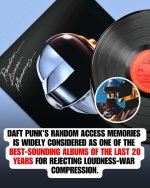Totally disagree on Tumbleweed. The SACD is by far the best sounding. It’s very analog sounding. The others sound compressed by comparison.
DSD is, all else being equivalent, the most analog sounding digital format. I read a while ago that many record companies were doing their archives in DSD as back ups to their analog tapes.
All DSD is not the same though. DSD64 is the base DSD and what the files in SACDs are. There can be some fairly serious noise issues in the audible range with these files. T+A goes as far as turning off some functions in their DACs when DSD64 is detected in order to protect other gear, specifically speakers.
Native DSD is far better. True "native DSD" starts at quad DSD (DSD256). Lesser DSD uses DSD over PCM (DoP) to transport the signal to the DAC. Native DSD is transported without the conversion. I know I have not explained this correctly, but the point I am making is valid. True DSD is quad or higher. DSD256, DSD512, etc. Above DSD512 the advantages are beyond the point of diminishing returns. From what I read, record companies mostly archive in DSD256 for the best preservation of their original materials.
I have compared and quad or above is superior. My DAC also likes it better and allows all of its functions at this level. This is why all of my material is presented to the DAC in DSD512 (actually using a base of 48 instead of the standard 44.1). Therefore my DAC plays all in 24.6Mhz. It is truly analog sounding in my view. HQPlayer as the playback engine handles all of the files. I cannot begin to explain how all of this works, but it does. HQPlayer is amazing software. It is not cheap, but it is not overly expensive either.
The main and real issue with DSD is file size. The size of the files makes it prohibitive for streaming, especially when we start talking about "Native DSD". The largest I have encountered is a recent album that I purchased which is over 20GB in size.
Yes there are some very fine DACs that do not support DSD. Berkley for example. There are others that specialize in DSD. T+A for example examines the signal coming in and has completely different paths for PCM or DSD. PCM using more standard chips (mine uses the BurrBrown, I believe now called Texas Instruments), but uses an in house developed system for decoding DSD files. Some such as Benchmark throw in basic DSD64 decoding in order to claim DSD support. In order to truly support DSD correctly Native DSD (DSD256 or above) is required.
Another example is PS Audio. Internally all files are converted to extremely high DSD, I believe they use 10x DSD internally (it might actually be higher). The final stage converts the signal back to DSD128 for converting to analog. I talked with Ted Smith (their digital guru) extensively on this subject. While he talks way above my head as far as digital goes, the main point was that a DSD stage in processing is required for the most analog sounding digital.
And as to Mike's point. I have the Tumbleweed SACD and ripped the DSD64 files to my server. When played using the HQPlayer engine to a "native DSD" DAC, it is about as good as digital gets.

